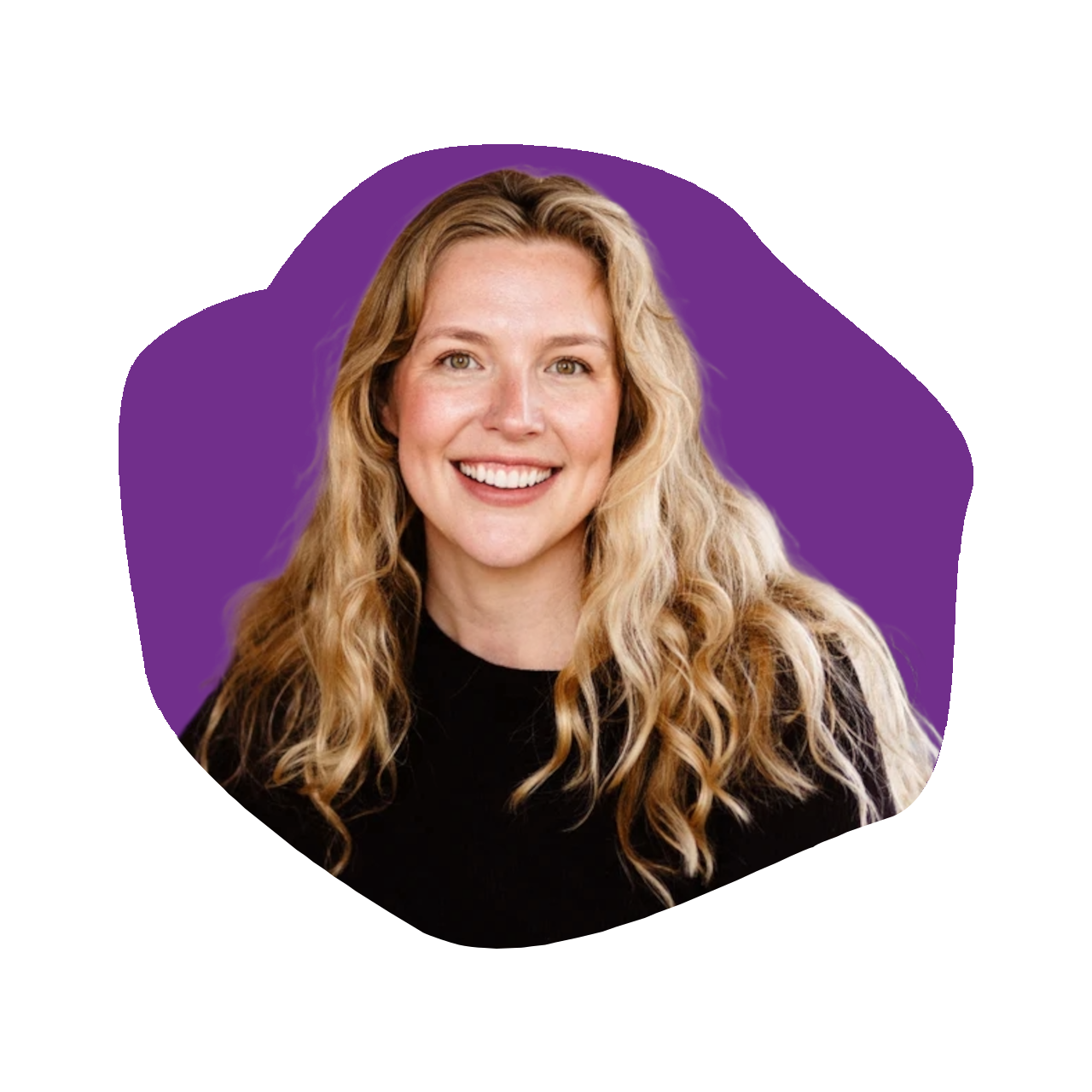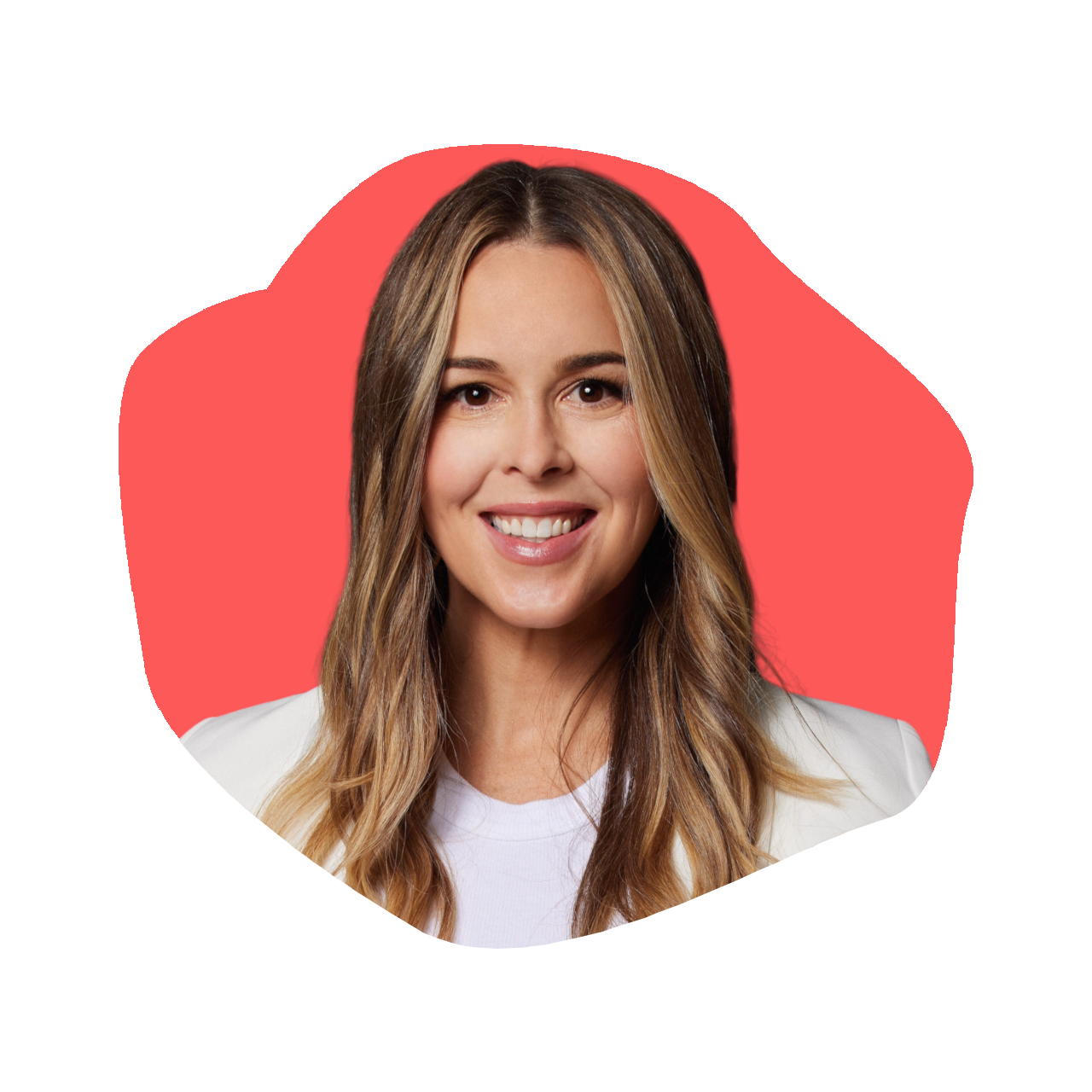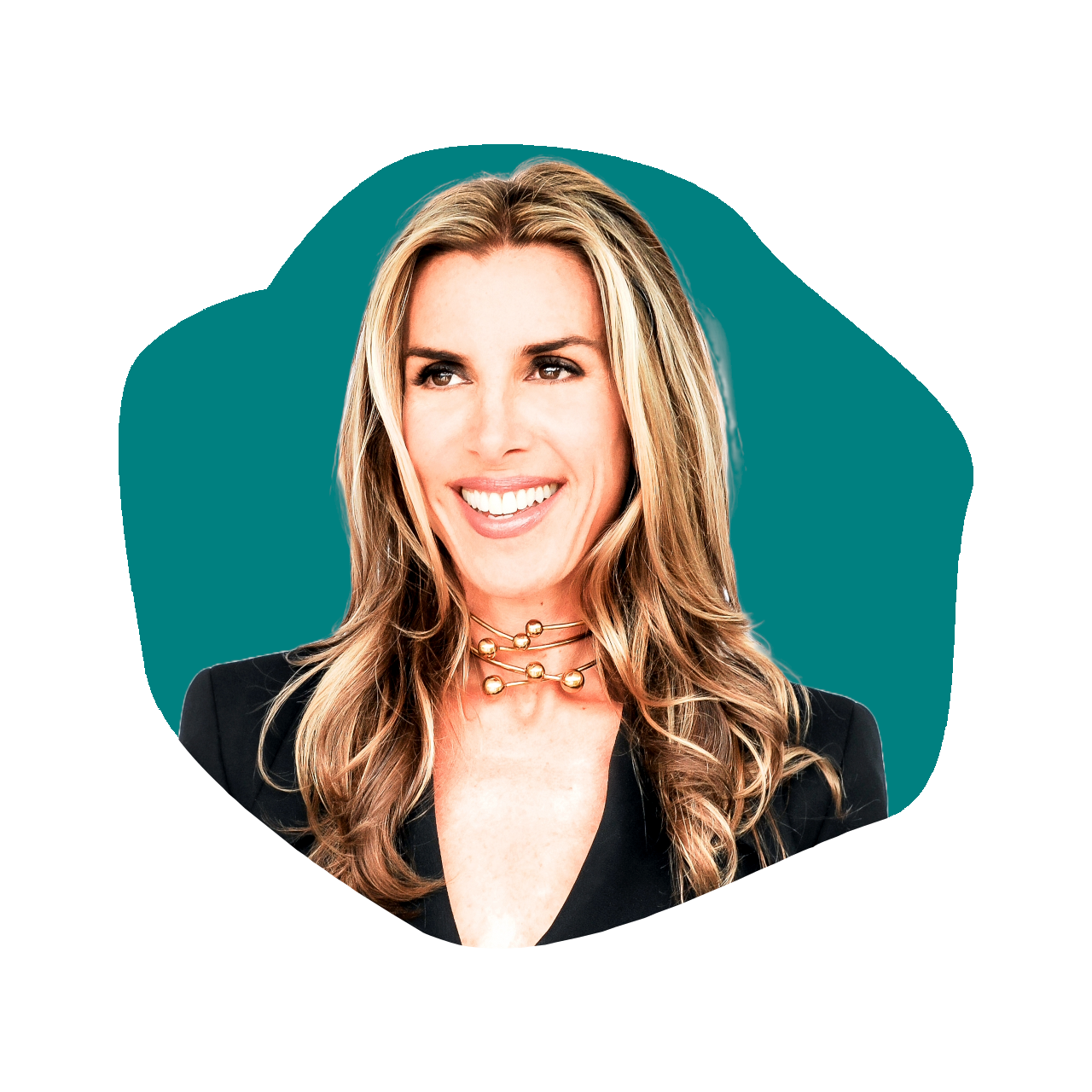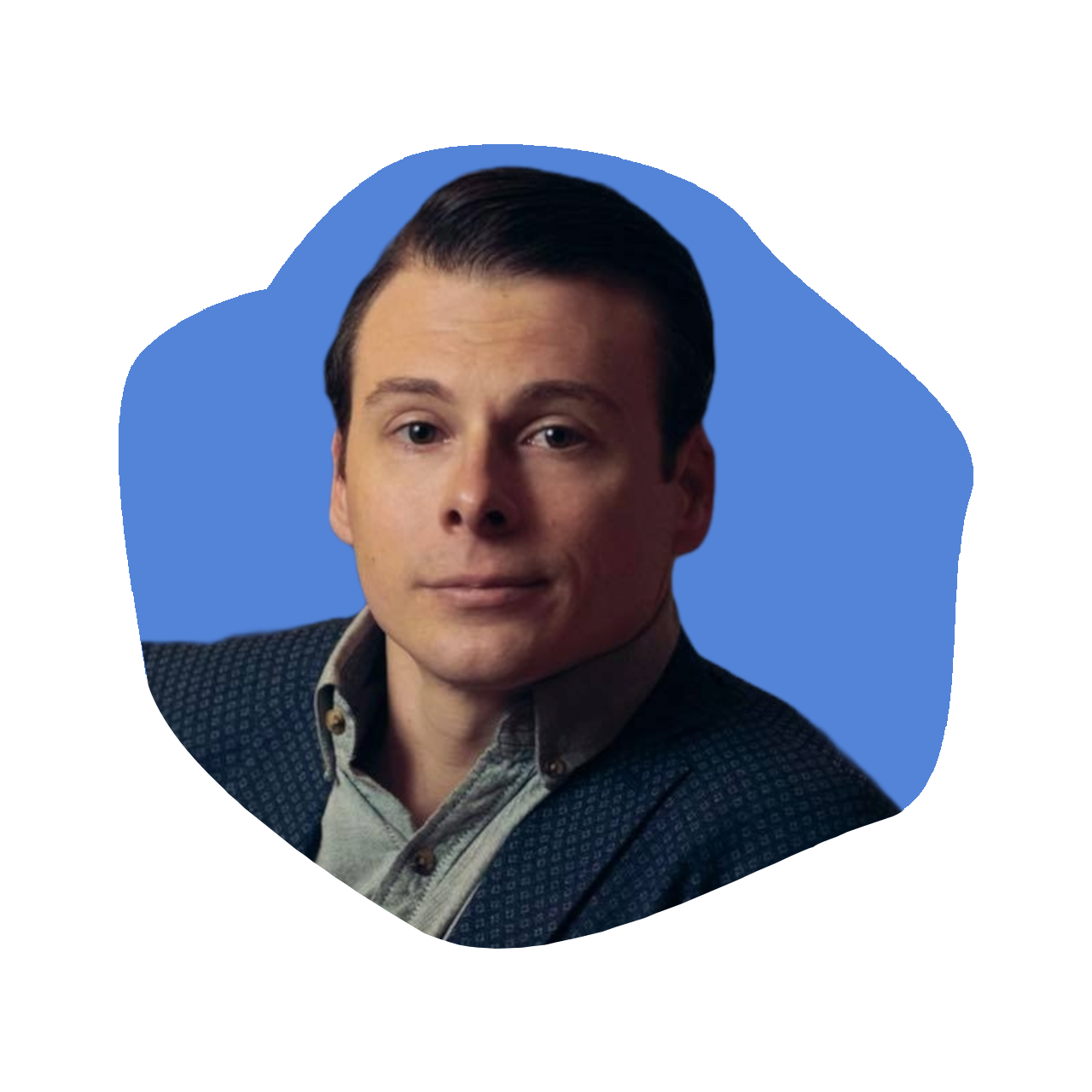Julie Bornstein – Co-founder & CEO of The Yes
Episode 93
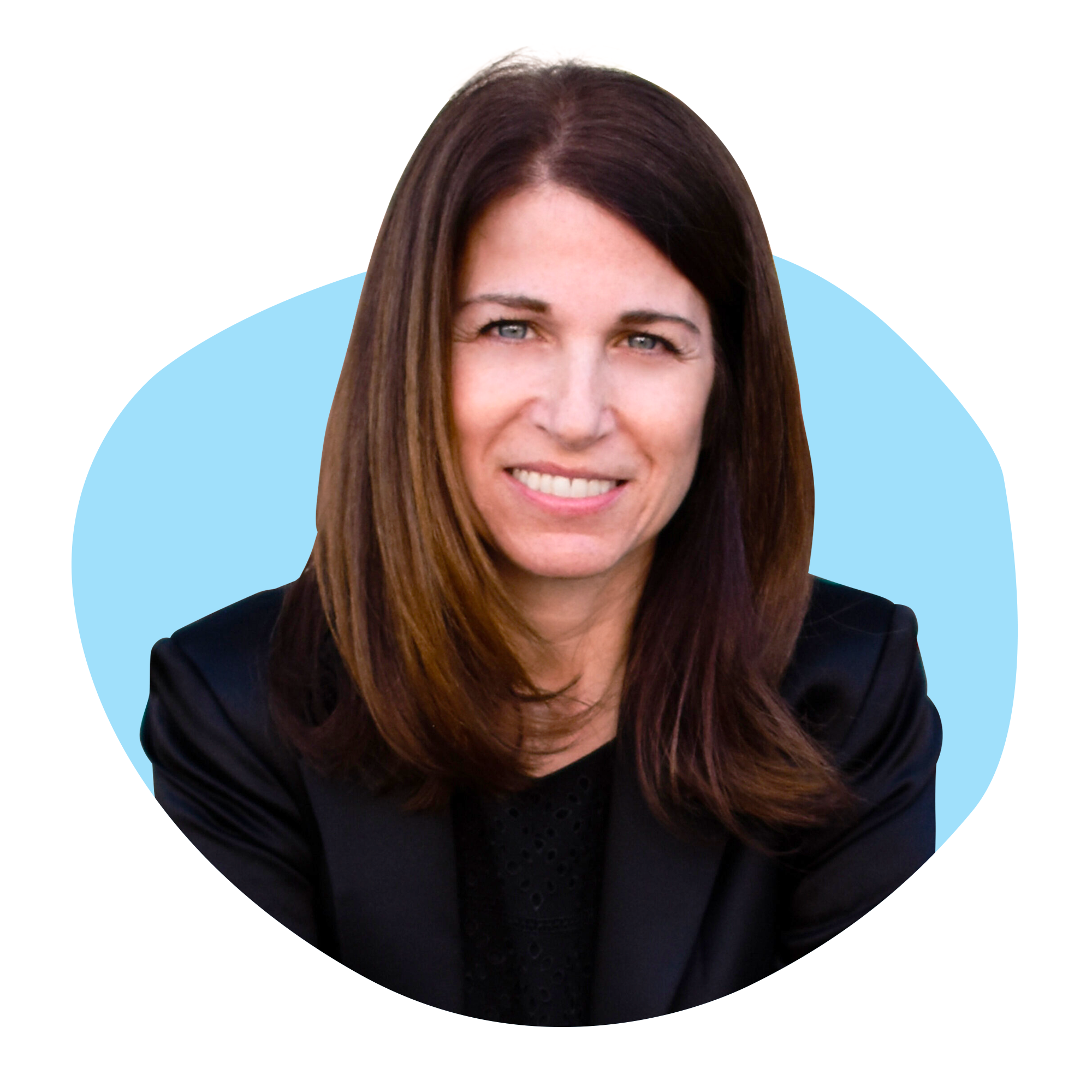
Resources from
this episode:
Transcript
Kara Goldin: Hi, everybody. It’s Kara Goldin from Unstoppable, and I’m so excited for our next guest. This is Julie Bornstein. She’s the co-founder of The Yes. I’m very excited to have you here, Julie.
Julie Bornstein: Thank you. I’m so excited to be here.
Kara Goldin: Julie and I have known each other for a while now, met through our mutual friend and queen, Elaine Rubin of Queen of E-commerce, over the years. A little background on Julie, she spent her career basically at the intersection of fashion and technology. She created The Yes after years of working with amazing, amazing brands. Most recently she was Stitch Fix’s Chief Operating Officer and Board Member where she helped scale the company to over a billion in under six years, so crazy. I mean, amazing, amazing. Prior to that, Julie served as Chief Marketing Officer and Chief Digital Officer at Sephora, launching the Beauty Insider Loyalty Program and growing Sephora into a digital powerhouse.
Julie also led the E-commerce for Urban Outfitters, and prior to that for Nordstrom’s, just a few amazing brands that we’ve all heard of. She’s just in addition to being kind and such an amazing mentor and entrepreneur and just has done large companies, small companies, and really knows her stuff, so I’m very, very excited to have her here to talk a little bit more about her first outside of everyone else’s businesses launch called The Yes, so again, welcome. Just tell us a little bit about how this came up.
Julie Bornstein: Thanks, Kara. That was a really-
Kara Goldin: Yeah.
Julie Bornstein: Kind introduction. I have been thinking about The Yes since I was probably 10 years old. I grew up in Syracuse, New York. It was cold and snowy and boring, and I spent every weekend in the mall. I was an avid shopper at a very young age. Knew the ins and outs of the mall and felt like shopping was inefficient. I knew I wanted something specific. I was trying to find it. I enjoyed the journey, too, but it was sort of always in the back of my mind. Then, I got interested in other things and eventually came back around to E-commerce. What happened was I remember where I was sitting the first time I saw amazon.com turn on and you could buy a book online. I had worked in both retail and on the wholesale side of fashion and my brain exploded with E-commerce ideas around what you could do with fashion.
I ended up really spending… I did a couple of other things job-wise, but was really watching the birth of E-commerce. I had moved to Seattle for my boyfriend, who became my husband. He and I had met at business school and he actually went to join Amazon in the early days a couple of months after they had launched. We were in Seattle and I was working for Starbucks and Nordstrom announced that they were going to launch E-commerce. I had already been thinking about things and watching kind of the startup environment, and as soon as I heard Nordstrom was launching, I thought, I’ve got to go find out about that.
I spent about six months convincing them to hire me and most of the people that worked there had been working for the company. They had taken their catalog division and made it an E-commerce spinout, gotten venture backing for it. They were kind of like, “Who are you? Why should we hire you?” It took a lot of persistence. Finally they did and I was there for really the first five years of that business. I had so many sort of core beliefs and instincts around what I wanted as a consumer myself and a lot of help from having heard my husband sort of process verbally how Amazon was being organized. I jumped in and helped grow that business really from zero to… We grew the business in the first five years to $350 million online and we turned from losing money to becoming profitable-
Kara Goldin: Crazy.
Julie Bornstein: And it was really fun. Then, sort of in my career, I went on to work for Urban, as you mentioned, and Sephora, and then I was introduced to Katrina Lake, the founder of Stitch Fix. The ideas that I’d always had were collecting so much data, but were not really using it effectively. We’re buying all of this inventory and it’s sitting in a warehouse and it’s really limiting us to what we can potentially sell. We’re making guesses around what’s going to sell and what’s not, so the traditional retail model, and we were also building photo studios. Each of those companies I built a photo studio for so we could reshoot all of the samples to actually put it up on the website.
There were just so many inefficiencies, and also, technology was fairly limited and so we had all of these ideas of things we wanted to build and really we couldn’t build them in the early days. All of this was sort of in the back of my mind and I had all of these different experiences, and eventually, I would say the last piece that I gathered was really working closely with the Data Science Team at Stitch Fix. That team was build by a guy named Eric Colson and he is both brilliant and also brought a huge amount of experience from the tech world. He had been at Yahoo and then at Netflix and had helped them build their first algorithms, and so it was really fun to see how someone could merge kind of their experience in tech with data science and apply it to fashion.
I got very involved in that part of the business and really passionate about it, but ultimately, I felt like there’s different business model out there, one where customers actually shop for themselves, but have the advantage of an algorithm that really helps them figure out what they want and surface the things that they’re interested in a much more efficient way. The idea for The Yes came about because my feeling was there was a better E-commerce experience to be had and now was the time to build it because you could both leverage all of the photography and assets from the brands.
You no longer needed to build a photo studio, get every sample. You no longer needed to buy all of the inventory because technology had advanced such that you could truly build a unified shopping cart across multiple sites and that I had sort of emerged to a place where you could apply it in a very practical way to a category that was quite nuanced and complex. I would say that my lifelong experience and kind of each of the places I had been I learned new things really led me to build The Yes.
I think I would say the last thing that was the inspiration was as I was leaving Stitch Fix and thinking about what I wanted to do next, I was being recruited by some of the big retailers who were looking for kind of next generation CEOs. I spent some time thinking about that, too, because my dream was always to run a big fashion retailer. I realized that if I was going to run a company, I needed to truly believe that that company was set up to succeed. As I did my research and I spent time thinking about a lot of paths to get there, I realized that building from scratch was the only way that I was going to build what I truly believed was needed to thrive in the next generation. I truly at age 47 felt ready to be my own boss and bring together the team I believed needed to, so I would say that was the final inspiration.
Kara Goldin: That’s awesome. Very cool, so you’re a co-founder. Who’s your other founder?
Julie Bornstein: My other founder is a guy named Amit Aggarwal, who is technical, and as I started thinking about his business and talking to some VCs, I knew that the most important partner to find was someone who actually had the experiences I didn’t, which was the ability to technically build this idea. As I was talking to a bunch of VCs, one of the sort of duo that was most helpful to me in my early days of thinking about this was Jeremy Liew and Nikki Quinn at Lightspeed. They had been involved in investing in Stitch Fix, and so they had sort of tracked my career and they had reached out and were really proactive and really great partners. They said to me, “You know, you are going to get a higher quality person as a co-founder rather than just trying to hire a CTO. You should think about having a co-founder anyway because it’s really nice to have someone to [crosstalk 00:09:42] bounce something [crosstalk 00:09:42]-
Kara Goldin: Yeah, totally [crosstalk 00:09:43]-
Julie Bornstein: And someone to hold you accountable and really sort of have the level investment in it. I was sold, and so the key for me was finding the right person. They introduced me to a few terrific people and so did a couple of the other VCs. Bane, who Scott Friend, who I think you know who has been an investor in many consumer companies, had always been someone I had admired and sat on a board with. He was one of the people I talked to early [inaudible 00:10:13] and he said, “Well, we have a guy who’s a former CTO of one of our portfolio companies, Bloomreach,” which I knew had done search and personalization, “And his name is Amit Aggarwal and he’s working on his own thing.” I said, “Well, you have to introduce me at least, nothing else maybe you can connect me to someone else.” He has such great relevant experience.
Then, Amit and I met and we kind of dated for a few months as I was working on a business plan, spending time with him, meeting some other people, but I really loved his experience. He was so different from me. Very quiet, very thoughtful, smart as can be. Terrific reputation and a really kind of ML engineer. Eventually, we sort of became sold on each other and we closed the first round kind of just as he formally decided to come on. He has been my partner since we started this business.
Kara Goldin: That’s awesome. You and I were talking briefly about this before we hopped on but you were supposed to launch in March, and obviously a crazy time in 2020 to be launching a company, so what did you decide to do?
Julie Bornstein: Well, we had worked on building the product for two years, which is pretty unusual. This was not a startup where we were going to put something out there to see what worked and then [inaudible 00:11:33] on it. I had a really clear view of what this business needed to have at its core to be successful and that required building a couple of pretty complex pieces of technology and also going out and meeting with hundreds of brands and convincing them to be a partner with us. We raised enough money to last us so we could really build the product for two years, so then March 26th was our big date that we had targeted and were planning for and, of course, March 12th, the world changed dramatically for us here. We decided we really need to step back and wait and see. We knew we wouldn’t get the press coverage. We felt like it was tone deaf and we just had no idea what was about to happen.
Fortunately, we had raised enough money that we could keep going, and the truth is, you’re never really ready, and so in my mind, because there were a few more things that felt really important to me to finish, we had the opportunity to do a few things more in the product. We basically just said, “Let’s watch and see what happens.” None of knew at that point what was going to happen. We sort of like revisited every two weeks, where are things at? How do we feel about things? We decided about mid-April, let’s target late May. It just sort of feels either this thing will have been somewhat resolved, in our naïve way, or we will at least have kind of gotten to a new understanding and reality of it. If something changes, we’ll obviously change our plans, but we needed to launch. We needed to get users on the platform and actually get feedback.
We decided May 20th and we ended up getting very lucky because we had a few weeks before the George Floyd death and the incident that then created a whole second wave of just [inaudible 00:13:16] activity in the country around things that felt really important and made our business feel a little trivial, I won’t deny it. We had sort of this two-week period where we got a lot of press and then we went silent in respect for all that was happening, but we had at least gotten the product out there and we started to get some users. Then, it’s been a crazy time to try and pitch a product that’s not really needed right now. People are not getting dressed and going out or then going to work, but of course, there’s also the benefit of people being at home, having the time, being open to trying new things.
Kara Goldin: Totally.
Julie Bornstein: Also, really wanting to support our brands. This is a situation where a lot of these businesses have been deeply affected by COVID and all that’s happening, and so for us, a lot of this is also, how do we help support the brands to get through this period of time?
Kara Goldin: I loved what you said about launching and you knew, just because you had worked with so many launches, that nothing was going to be perfect. You were going to launch in order to get feedback, which I think is so critical and I always share this with entrepreneurs that like obviously in the food industry that I’m in, you want to launch something that is safe, that isn’t going to make anyone sick or obviously kill them. That would be a great thing, but obviously you want to get it out there so that you get consumer feedback on stuff. What did you think when you launched it? Or I should say, what did you learn that you didn’t know when you launched it?
Julie Bornstein: Yeah. Well, one of the things that’s interesting is because I was an older founder and I was known in my industry because I had been doing all of these different things, I felt like that made it easier to raise money. I wasn’t a young unknown person, but it also made me feel like the kind of weight of doing this right and getting right out of the gate felt really high. I felt like we’d spent two years, that was unusual. We had written a couple of articles. The stakes felt high and they felt higher than perhaps they did for… Even when I hear Katrina’s early days story before I even met her, she was testing things out from her dorm room and it was such a different… She raised $700,000 and I raised $11 million in my seed round.
It was a very different start, and so the stakes felt really high when I was launching and it was helpful I was at a True Ventures event. They’re one of our investors and someone said there, “If you wait until you feel like it’s perfect, you’ve waited too long.” That was really helpful to me because even though I knew I couldn’t wait, because this was my first thing and this had like my name written all over it, I just felt like it should be perfect. It’s true, it still is not perfect and it never will be, so I needed to get over that.
I think the thing that I… For two years, I sat with this idea. I would say the very beginning felt like, “Oh my God, can I actually pull this off?” Then, I had a team and that suddenly felt so much better because it wasn’t just me alone, it was all of us were in this together, but I still felt when we were launching like, “Will people get this? Will they like it? Will it actually have legs?” For me, the best part about launching was, of course, not everybody loves it, and of course, we didn’t win everyone over right away, but we definitely won some people over. They thought it was really cool and it really made sense to them and it really resonated. It was just so great to actually have users who understood what we were trying to do. I would say that was the most exciting thing about the launch is like actually getting real-
Kara Goldin: Confirmation [crosstalk 00:17:06]-
Julie Bornstein: And it wasn’t friends or family, you know?
Kara Goldin: Yeah. Yeah, yeah, yeah [crosstalk 00:17:09]-
Julie Bornstein: That’s who was in our [inaudible 00:17:09] so I didn’t really trust them even though I love them, so I’d say the confirmation. I think the thing that I realized, which I think is probably the case for every new business, is that some people didn’t get it, and so the idea of, “Oh, we’re going to say it this way and then they’re going to understand all of the stuff that goes in behind it because we need to keep it simple.”
I think we realized that certainly people who came into the app, because we built an app-only, without context didn’t always get it. They didn’t appreciate what was going into it or what it was supposed to do and they felt like it was work. It was very clear right away that it worked for some people and it didn’t work for others. Now, we’re in the phase where we just hit four months, so we’re four months in and we’re now trying to figure out, “Okay, is it that those are the wrong people? Or is it that we need to do a better job of helping those people come to understand the product and what’s so great about it or evolve some things to make it work differently for them?
We’re in the stage where now we know there’s product-market fit with the segment and, can we broaden that segment? Or, how do we get more of that segment?
Kara Goldin: Interesting. Which retailers are on the platform?
Julie Bornstein: We’re not working with multi-brand retailers, we’re only working directly with brands. We have 175 brands on the platform. We started kind of at the very high end, talking to the luxury brands so that we could sort of secure them because it’s much harder to go kind of upscale after you’ve sort of centered your product in the middle. In our approaches, we want to be high to low. We’re modern fashion. It’s how women shop. We’re all about brands, so we want brands that all stand for something, but they’re all brands that people can appreciate, understand, they mean something, but can really represent the whole range of things that you might buy. We have Prada and Miu Miu, we have Dolce & Gabbana and Balenciaga. We have these great emerging designers who are also in the I would say more emerging luxury space, so Rosie Assoulin and Adam Lippes and some brands that are, I would say, less well known, but definitely in more of that contemporary space and are really cool like the brand Kuhl, whom I think you might know.
Kara Goldin: Yep [crosstalk 00:19:30]-
Julie Bornstein: And then we have brands that are frame and theory and sort of like great, broad contemporary brands. Then, we have DTC brands like we have Everlane and Criona and La Ligne, who traditionally only sell through their own channels, but understand that as customer acquisition gets expensive, being part of some new platforms are interesting. Because we have relationships with them, they trusted us and they like the idea and they were willing to bet on us, which has been amazing.
Then, we have specialty brands, so we’re the first place that Aritzia has ever sold outside of their own channels. We have Zara on the platform, we have Maje, so some cool European kind of everyday fashion brands. We have Levis, so it’s really broad. We’re probably [inaudible 00:20:18] or over 200 and we already actually have the largest assortment of apparel other than Farfetch on the platform today. We have a bigger assortment than like a Nordstrom or a Shopbop, and because we are carrying the entire collection from each of these brands, so-
Kara Goldin: That’s awesome.
Julie Bornstein: It’s really nice and you let instead of a buyer kind of trying to guess what you’re going to like, our algorithm really does that work.
Kara Goldin: How did you decide to go app-only?
Julie Bornstein: We basically wanted to start in one place. We wanted to work, I think, two primary things. One is certainly mobile is the future, and while people still are shopping on web and we’re now working out web, we wanted to make sure that we were building for mobile and not building kind of… I think a lot of E-commerce today is kind of take the site and translate it to mobile as opposed to build for a mobile-first environment. Then, the second is it just kind of had more constraints, and so we felt like it’s harder to really solidify and keep simple the product and it will force us to make decisions, so that’s kind of what we decided at first.
Kara Goldin: Obviously, you’re in apparel right now, clearly, with all of those brands that you mentioned. Is the plan to go kind of beyond apparel and into some other sectors?
Julie Bornstein: The fashion industry is enormous, and so it’s hundreds of billions of dollars, hundreds of trillions of dollars globally, and so we’re not in a rush to move off of it. Part of what we’ve done and what makes us different is that we spent two years building the most expensive taxonomy that exists in fashion so that the algorithms and the recommendations are super nuanced and understand all of the factors that make things like Pinterest and Google and what they try and do with recommendations. They don’t really understand the difference between brands, the difference between quality, the difference between fit, those things that are so important when doing this in fashion.
We’ve really put a huge amount of energy into understanding this vertical and we’re going to stay focused on this vertical for quite a while. We will stay focused on women’s for a good year. We’ll probably then look at men’s. We’re only in the U.S. right now, so we also have the ability to… We’re not owning inventory, so the ability to go more global. We are not in a rush to move on to other verticals. I think our model is built such that as long as you really understand and you train models to be able to make recommendations around other categories, this certainly can work for other categories, but first we got to nail this one.
Kara Goldin: That’s awesome. Very, very cool. When you were at Stitch Fix, you helped scale the company to over a billion dollars. What do you think is like the key to being able to do that for a brand?
Julie Bornstein: I think for us in particular, especially because at Stitch Fix we hadn’t raised a lot of money, the company only raised in the mid-40s ever, and so that’s pretty low if you look at kind of the track record of other [crosstalk 00:23:24]-
Kara Goldin: Very low.
Julie Bornstein: And so I would say the early key was getting the unit economics to work. The model was a really interesting one because we were sending a box of five items and the average keep rate, it started at one, then it would go to… We were watching the improvement in how many items people would keep. Over time, it grew above two and it’s probably closer to somewhere between two and three now, and so that model actually works quite well. You get someone a box, if you think about all of the expensive shipping and returns, the whole system was built around assuming some return levels, so we’re really efficient at taking returns in. If the average person kept two or more items, then every sale was profitable.
Getting those unit economics to work early on was one of the cornerstones and part of the reason the unit economics worked was because of actually how many people would keep items, but the second was also that we were able to grow to almost $400 million through primarily referral and influencers. We did [crosstalk 00:24:29]-
Kara Goldin: Amazing.
Julie Bornstein: Not have to spend a lot of money on marketing in the early days, in part because the world was different back then. When we started to grow the business in the early days, I came in as a board member in 2012, the business was started in 2011, we were really getting primarily referrals through bloggers. Bloggers were different then and Instagram, there’s so many more people and each person has such a light touch, but with bloggers, there were fewer of them and they had bigger influence over their reach.
They were writing lots of things, they were posting every day, people were reading them, and so we were seeing these influential bloggers bring on hundreds of users. Then, there was a great referral piece sort of built into the product and so there was this exponential sharing aspect. There was a lot of viral growth in the early days, which it was also a very new concept, Stitch Fix at the time, and so people thought they were excited to share the product with their friends who may not have discovered it.
Obviously, the world changed and the newness of Stitch Fix changed and we started to spend money and then learn how to scale effectively, paid marketing, but really in those early days, we were able to get to sort of product-market fit in a fairly low-cost way, which allowed us to really figure out all of the ways that we… sort of the things we needed to do to help continue to grow and scale the business.
Kara Goldin: It’s so interesting, and I love what you’re doing at The Yes, but you’ve just seen so many really, really incredible companies go from almost nothing to being huge. I’m so excited for you and I can’t wait to watch this really take off. It’s very, very exciting. Well, I always ask one last question. What makes you unstoppable?
Julie Bornstein: I love that question. I would say that if I really want something and I really believe in it, I just don’t take no for an answer, and I [crosstalk 00:26:35]-
Kara Goldin: I think that’s true, actually, so [crosstalk 00:26:38]-
Julie Bornstein: I [crosstalk 00:26:38]-
Kara Goldin: I love it.
Julie Bornstein: I’m a middle child and I feel like middle children learn how to… they’re good at observing what’s happening around them and they’re good at figuring out how to create win-win situations for everybody. You need to understand what motivates the other person and what’s going to convince them, but I would say since I was a young girl, I was pretty good at figuring out how to get what I wanted in a way that made everyone feel good and how better people get what they wanted, too. I’ve taken that both persistence and approach pretty much to everything I’ve ever done.
Kara Goldin: I was the last of five kids, and I took the exact same approach. We’re kindred spirits and for different reasons. Mine was not having a brother or siblings on either end. Mine was my parents and negotiating with them, and so that’s awesome. Well, where do people find… First of all, The Yes, is that theyes.com? Obviously, it’s an app, so that’s the website, but [crosstalk 00:27:49]-
Julie Bornstein: You should download the app on the… It’s for iOS only right now, so you can download the app on your iPhone at The Yes, and the website just directs you to-
Kara Goldin: Directs you [crosstalk 00:27:59]-
Julie Bornstein: The App Store.
Kara Goldin: Over there. Got it.
Julie Bornstein: Yeah.
Kara Goldin: Then, where do people find Julie Bornstein? On social and-
Julie Bornstein: Yeah, and LinkedIn. Everything’s under my name, Julie Bornstein, and I spend a little time on Instagram, mostly because it’s such a relevant marketing platform today, but mostly via LinkedIn.
Kara Goldin: That’s awesome. Well, everybody, Julie’s been such a instrumental person and just this industry as a whole from the beginning, so definitely have a look and follow Julie and go download The Yes app. It’s very, very exciting. Thank you so much, Julie. It was great having you and seeing you, and everybody, if you enjoyed this podcast, please give high reviews and go subscribe and do all of that stuff. We’re every Monday and Wednesday. We bring super exciting people that have great stories and are out there doing cool stuff, so we’re very, very exciting to be able to bring Julie to you today. Have a great week.





